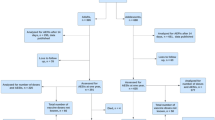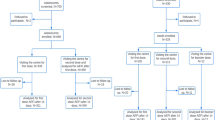Abstract
No child should be denied immunisation without serious consideration given to the consequences. In the past, many contraindications to vaccination were based on theoretical concerns. These concerns often assumed an immunoallergic mechanism for adverse reactions, whereas many such events are often due to other causes. Other contraindications were based on evidence of excess risk, but this risk was not always balanced against the higher risk of disease. Therefore, contraindications often varied between countries and over time.
In recent years, the widespread availability of less reactogenic vaccines and the common use of combined preparations have prompted a review of contraindications in many countries. Accumulated experience worldwide has allowed the list of conditions that contraindicate vaccination to be reduced. The international consensus now is that there are very few situations in which a child should not be immunised and the only true contraindication applicable to all vaccines is a history of anaphylaxis to a vaccine component or following a previous dose of the vaccine. Health professionals should feel confident in accepting national recommendations and, if in doubt, should refer children for an expert opinion, rather than deny a child protection against a serious infection.


Similar content being viewed by others
References
UK Departments of Health. Immunisation against infectious disease: updated chapters on diphtheria, Hib, pertussis, polio and tetanus. London: Department of Health, 2004
National Health and Medical Research Council. Australian immunisation handbook. 8th ed. Canberra: Commonwealth of Australia, 2003
National Immunization Program, Centers for Disease Control and Prevention, US Department of Health and Human Services. Epidemiology and prevention of vaccine preventable diseases. 8th ed., 2004 [online]. Available from URL: http://www.cdc.gov/nip/publications/pink/def_pink_full.htm [Accessed 2004 Oct 26]
Canadian Medical Association. Canadian immunization guide. 6th ed., 2002 [online]. Available from URL: http://www.phacaspc.gc.ca/publicat/cig-gci/pdf/cdn_immuniz_guide-2002-6.pdf [Accessed 2004 Oct 26]
UK Departments of Health. Immunisation against infectious disease. London: HMSO, 1996
Wood D, Halfon N, Pereyra M, et al. Knowledge of the childhood immunisation schedule and of contraindications to vaccinate by private and public providers in Los Angeles. Pediatr Infect Dis J 1996 Feb; 15(2): 140–5
Cohen NJ, Lauderdale DS, Shete PB, et al. Physician knowledge of catch-up regimens and contraindications for childhood immunizations. Pediatrics 2003 May; 111(5): 925–32
Ponvert C, Scheinmann P. Vaccine allergy and pseudo-allergy. Eur J Dermatol 2003 Jan-Feb; 13(1): 10–5
Bohlke K, Davis RL, Marcy SM, et al. Risk of anaphylaxis after vaccination of children and adolescents. Pediatrics 2003 Oct; 112(4): 815–20
Khakoo GA, Lack G. Recommendations for using MMR vaccine in children allergic to eggs. BMJ 2000; 320: 929–32
Andrews RM, Kempe AE, Sinn KK, et al. Vaccinating children with a history of serious reactions after vaccination or of egg allergy. Med J Aust 1998 May 18; 168(10): 491–4
James JM, Burks AW, Roberson PK, et al. Safe administration of measles vaccine to children allergic to eggs. N Engl J Med 1995; 332: 1262–6
Centers for Disease Control and Prevention. Measles, mumps, and rubella: vaccine use and strategies for elimination of measles, rubella, and congenital rubella syndrome and control of mumps: recommendations of the Advisory Committee on Immunization Practices (ACIP). MMWR 1998; 47: 1–57
Fox A, Lack G. Egg allergy and MMR vaccination. Br J Gen Pract 2003 Oct; 55: 801–2
Patja A, Makinen-Kiljunen S, Davidkin I, et al. Allergic reactions to measles-mumps-rubella vaccination. Pediatrics 2001 Feb; 107(2): E27
Rietschel RL, Bernier R. Neomycin sensitivity and the MMR vaccine [letter]. JAMA 1981 Feb 13; 245: 571
Cox NH, Forsyth A. Thiomersal allergy and vaccination reactions. Contact Dermatitis 1988; 18: 229–33
Jefferson T, Rudin M, Di Pietrantonj C. Adverse events after immunisation with aluminium-containing DTP vaccines: systematic review of the evidence. Lancet Infect Dis 2004 Feb 1; 4(2): 84–90
Aberer W. Vaccination despite thimerosal sensitivity. Contact Dermatitis 1991; 24: 6–10
Elliman D, Dhanraj B. Safe MMR vaccination despite neomycin allergy [letter]. Lancet 1991 Feb 9; 337: 365
Madaan A, Maddox DE. Vaccine allergy: diagnosis and management. Immunol Allergy Clin North Am 2003 Nov; 23(4): 555–88
Cody CL, Baraff LJ, Cherry JD, et al. Nature and rates of adverse reactions associated with DTP and DT immunizations in infants and children. Pediatrics 1981; 68: 650–60
Cherry JD. Comparative efficacy of acellular pertussis vaccines; an analysis of recent trials. Pediatric Infect Dis J 1997; 16(4 Suppl.): S90–6
Baraff LJ, Cherry JD, Cody CL, et al. DTP vaccine reactions: effect of prior reactions on subsequent reactions. Dev Biol Stand 1985; 61: 423–8
Verschoor PL, Wilschut JT, de Jonge GA, et al. Frequent symptoms after DTPP vaccinations. Arch Dis Child 1991 Dec; 66(12): 1408–12
Deloria MA, Blackwelder WC, Decker MD, et al. Association of reactions after consecutive acellular or whole-cell pertussis vaccine immunizations. Pediatrics 1995 Sep; 96(3 Pt 2): 592–4
Long S, Deforest A, Smith D, et al. Longitudinal study of adverse reactions following diphtheria-tetanus-pertussis vaccine in infancy. Pediatrics 1990 Mar 3; 85(3): 294–302
Miller E. Vaccine safety surveillance. In: Talbot J, Waller P, editors. Stephens’ detection of new adverse drug reactions. 5th ed. Chichester: John Wiley and Sons Ltd, 2004: 571–590
National Advisory Committee on Immunization. Canadian immunization guide. 5th ed. Ottawa, Canada: Minister of Public Works and Government, 1998
Baraff LJ, Manclark CR, Cherry JD, et al. Analysis of adverse reactions to diphtheria and tetanus toxoids and pertussis vaccine by vaccine lot, endotoxin content, pertussis vaccine potency and percentage weight gain. Pediatr Infect Dis J 1989; 8: 502–7
Gold M, Goodwin H, Botham S, et al. Re-vaccination of 421 children with a past history of an adverse reaction in a special immunisation service. Arch Dis Child 2000; 83: 128–31
Vermeer-de-Bondt PE, Labadie J, Rumke HC. Rate of recurrent collapse after vaccination with whole cell pertussis vaccine: follow up study. BMJ 1998 Mar 21; 316: 902–3
Andrews RM, Kempe AE, Sinn KK, et al. Vaccinating children with a history of serious reactions after vaccination or of egg allergy. Med J Aust 1998; 168: 491–4
Cherry JD. Comparative efficacy of acellular pertussis vaccines; an analysis of recent trials. Pediatr Infect Dis J 1997; 16(4 Suppl.): S90–6
Rennels MB, Deloria MA, Pichichero ME, et al. Extensive swelling after booster doses of acellular-pertussis-tetanusdiphtheria vaccines. Pediatrics 2000 Jan; 105(1): e12
Tozzi AE, Olin P. Common side effects in the Italian and Stockholm I trials. Dev Biol Stand 1997; 89: 105–8
Jefferson T, Rudin M, Di Pietrantonj C. Systematic review of the effects of pertussis vaccines in children. Vaccine 2003 May 16; 21(17-18): 2003–14
Scheifle DW, Halperin SA, CPS/Health Canada, et al. Immunization Monitoring Programme. Active: a model of active surveillance of vaccine safety. Semin Pediatr Infect Dis 2003 Jul; 14(3): 213–9
Centers for Disease Control and Prevention. Diphtheria, tetanus, and pertussis: recommendations for vaccine use and other preventative measures. Recommendations of the Immunization Practices Committee (ACIP). MMWR 1991; 40 (RR-10): 1–28
Pollock TM, Miller E, Mortimer JY, et al. Post-vaccination symptoms following DTP and DT vaccination. Dev Biol Stand 1985; 61: 407–10
Bramley JC, Hall T, Finn A, et al. Safety and immunogenicity of three lots of meningococcal serogroup C conjugate vaccine administered at 2, 3 and 4 months of age. Vaccine 2001 Apr 6; 19(20-22): 2924–31
Fairley CK, Begg N, Borrow R, et al. Conjugate meningococcal serogroup A and C vaccine: reactogenicity and immunogenicity in United Kingdom infants. J Infect Dis 1996 Dec; 174(6): 1360–3
Begg NT, Miller E, Fairley CK, et al. Antibody responses and symptoms after DTP and either tetanus or diphtheria Haemophilus influenzae type B conjugate vaccines given for primary immunisation by separate or mixed injection. Vaccine 1995 Nov; 13(16): 1547–50
Collier LH, Polakoff S, Mortimer J. Reactions and antibody responses to reinforcing doses of adsorbed and plain tetanus vaccines. Lancet 1979 Jun 30; I(8131): 1364–8
Halperin SA, Scheifele D, Mills E, et al. Nature, evolution, and appraisal of adverse events and antibody response associated with the fifth consecutive dose of a five-component acellular pertussis-based combination vaccine. Vaccine 2003 Jun 2; 21(19-20): 2298–306
Southern J, Dean S, Ashton L, et al. Effect of prior polysaccharide vaccination on magnitude, duration and quality of immune responses to and safety profile of a meningococcal serogroup C tetanus toxoid conjugate vaccination in adults. Clin Diagn Lab Immunol 2004 Nov; 11(6): 1100–4
Jacobs RL, Lowe RS, Lanier BQ. Adverse reactions to tetanus toxoid. JAMA 1982 Jan 1; 247(1): 40–2
Baraff LJ, Cody CL, Cherry JD. DTP-associated reactions: an analysis by injection site, manufacturer, prior reactions and dose. Pediatrics 1984 Jan; 73(1): 31–6
Stetler HC, Orenstein WA, Bart KJ, et al. History of convulsions and use of pertussis vaccine. J Pediatr 1985 Aug; 107(2): 175–9
Baraff LJ, Shields WD, Beckwith L, et al. Infants and children with convulsions and hypotonic-hyporesponsive episodes following diphtheria-tetanus-pertussis immunization: follow-up evaluation. Pediatrics 1988 Jun; 81(6): 789–94
Miller D, Wadsworth J, Diamond J, et al. Pertussis vaccine and whooping cough as risk factors in acute neurological illness and death in young children. Dev Biol Stand 1985; 61: 389–94
Ramsay M, Begg N, Holland B, et al. Pertussis immunisation in children with a family or personal history of convulsions: a review of children referred for specialist advice. Health Trends 1994; 26(1): 23–4
Miyake S, Fujita M, Endo C, et al. Recurrence of febrile convulsions after the first diphtheria-pertussis-tetanus vaccination and measles vaccination in children with febrile convulsions: a questionnaire survey in Takamatsu City. No To Hattatsu 2001 Jul; 33(4): 336–41
Melin K. Pertussis immunization in children with convulsive disorders. J Pediatr 1953; 43: 652–4
Livingston S. Comprehensive management of epilepsy in infancy, childhood and adolescence. Springfield (IL): CC Thomas, 1972
Department of Health and Social Security. Whooping cough: reports from the Committee on the Safety of Medicines and the Joint Committee of Vaccination and Immunisation. London: Her Majesty’s Stationery Office, 1981
Institute of Medicine. DTP vaccine and chronic nervous system dysfunction: a new analysis. Washington, DC: National Academy Press, 1994
Royal College of Paediatrics and Child Health. Immunisation of the immunocompromised child: best practice statement. London: RCPCH, 2002
Centers for Disease Control and Prevention. General recommendations on immunization: recommendations of the Advisory Committee on Immunization Practices and the American Academy of Family Physicians. MMWR 2002; 51 (RR-2): 1–35
Centers for Disease Control and Prevention. Revised classification system for human immunodeficiency virus infection in children less than 13 years of age. MMWR 1994; 43: 1–19
Moss WJ, Clements CJ, Halsey NA. Immunization of children at risk of infection with human immunodeficiency virus. Bull World Health Organ 2003; 81(1): 61–70
Expanded Programme on Immunisation. Contraindications for vaccines used in the EPI. Wkly Epidem Rec 1988; 37: 279–81
Varilrix™ summary of product characteristics (revised version). Uxbridge: GlaxoSmithKline, September 2004
Varivax® summary of product characteristics (revised version). Maidenhead: Sanofi Pasteur MSD, March 2005
Krober MS, Stracener CE, Bass JW. Decreased measles antibody response after measles-mumps-rubella vaccine in infants with colds. JAMA 1991 Apr 24; 265(16): 2095–6
Dennehy PH, Saracen CI, Peter G. Seroconversion rates to combined measles-mumps-rubella-varicella vaccine of children with upper respiratory tract infection. Pediatrics 1994 Oct; 94(4 Pt 1): 545–7
King GE, Markowitz LE, Heath J, et al. Antibody response to measles-mumps-rubella vaccine of children with mild illness at the time of vaccination. JAMA 1996 Mar 6; 275(9): 704–7
Miller E, Waight P, Farrington P, et al. Idiopathic thrombocytopenic purpura and MMR vaccine. Arch Dis Child 2001 Mar; 84(3): 227–9
Salisbury DM, Olivé J-M. Immunization in Europe. In: Plotkin S, Orenstein W, editors. Vaccines. 4th ed. Philadelphia: WB Saunders Company, 2004
Tatochenko V, Mitjushin IL. Contraindications to vaccination in the Russian Federation. J Infect Dis 2000; 181: S228–31
Acknowledgements
No sources of funding were used to assist in the preparation of this study. The authors have no conflicts of interest that are directly relevant to the content of this study.
Author information
Authors and Affiliations
Corresponding author
Rights and permissions
About this article
Cite this article
Lane, L., Reynolds, A. & Ramsay, M. When Should Vaccination Be Contraindicated in Children?. Drug-Safety 28, 743–752 (2005). https://doi.org/10.2165/00002018-200528090-00001
Published:
Issue Date:
DOI: https://doi.org/10.2165/00002018-200528090-00001




